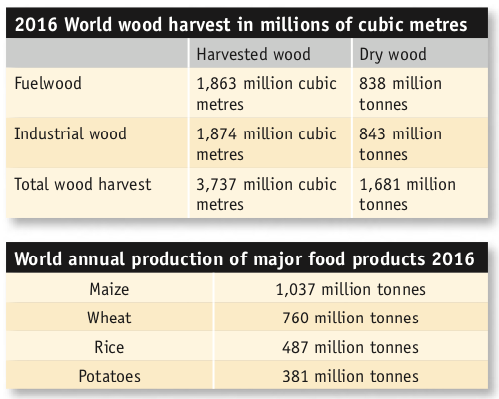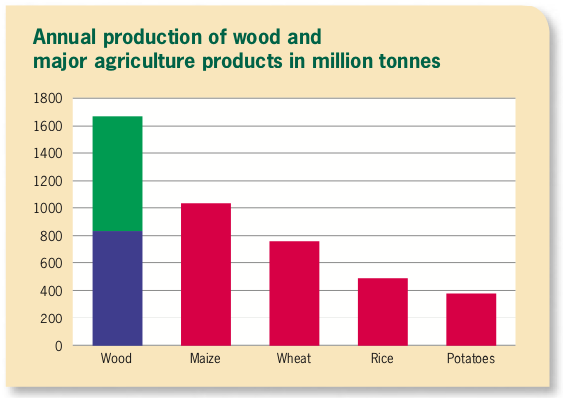Wood is as important as food
From New Zealand Tree grower August 2018

For over 60 years I have had to defend a common criticism of forestry that ‘forests including plantations are occupying land which should be used for food production’. It is claimed that New Zealand needs land to grow food for an ever-increasing global population. The implication is that growing food is more important than wood production. In 1980 I wrote a paper in the NZ Journal of Forestry which challenged this view. Since then I have read almost all global resource studies. All, except the Brundtland report of the World Commission on Environment and Development in 1987, completely ignore wood even though most them claim that they cover all products.

The 1987 Brundtland report is significant because, although it says little about the world’s need for industrial wood, it addresses the world’s need for fuelwood.
For example, a quote from chapter one:
Millions of people in the developing world are short of fuelwood, the main domestic energy of half of humanity, and their numbers are growing.The wood-poor nations must organise their agricultural sectors to produce large amounts of wood and other plant fuels.
And there is a most insightful quote on forest economics in chapter two:
...income from forestry operations is conventionally measured in terms of the value of timber and other products extracted, minus the costs of extraction. The costs of regenerating the forest are not taken into account, unless money is actually spent on such work. Thus, figuring profits from logging rarely takes full account of the losses in future revenue incurred through degradation of the forest.
 Yet, as I claimed in my 1980 paper, the world used more wood than any major food item or construction material. The world still uses a great deal of wood. For the year 2016 the Food and Agriculture Organization of the United Nations reported that the world wood harvest was 3.74 million cubic metres, with almost a 50:50 split between fuelwood and industrial wood.
Yet, as I claimed in my 1980 paper, the world used more wood than any major food item or construction material. The world still uses a great deal of wood. For the year 2016 the Food and Agriculture Organization of the United Nations reported that the world wood harvest was 3.74 million cubic metres, with almost a 50:50 split between fuelwood and industrial wood.
As wood is often measured in the green undried state, assuming one metre cube weighs one tonne overstates the relative importance of wood. To compare with agricultural products the wood total has been reduced assuming that dry wood weighs only 450 kilograms per cubic metre.
The following tables and graph compare wood with the annual harvest of the four major food products. Most of these, especially maize and wheat, we do not consume directly – they are food for chickens, cattle and pigs. Even with the generous reduction in the weight of wood the world uses more wood than maize, the most significant agricultural product. The world needs wood as much as it needs food.
Disclaimer: Personal views expressed in this blog are those of the writers and do not necessarily represent those of the NZ Farm Forestry Association.

No posts yet
Add a post